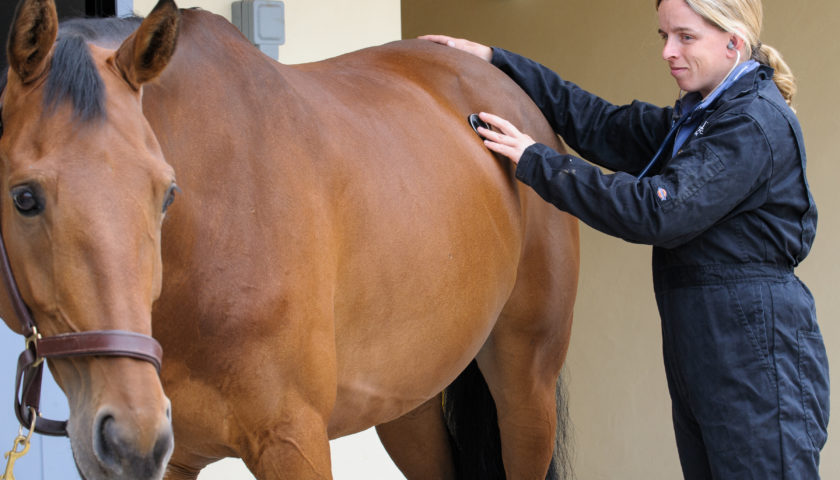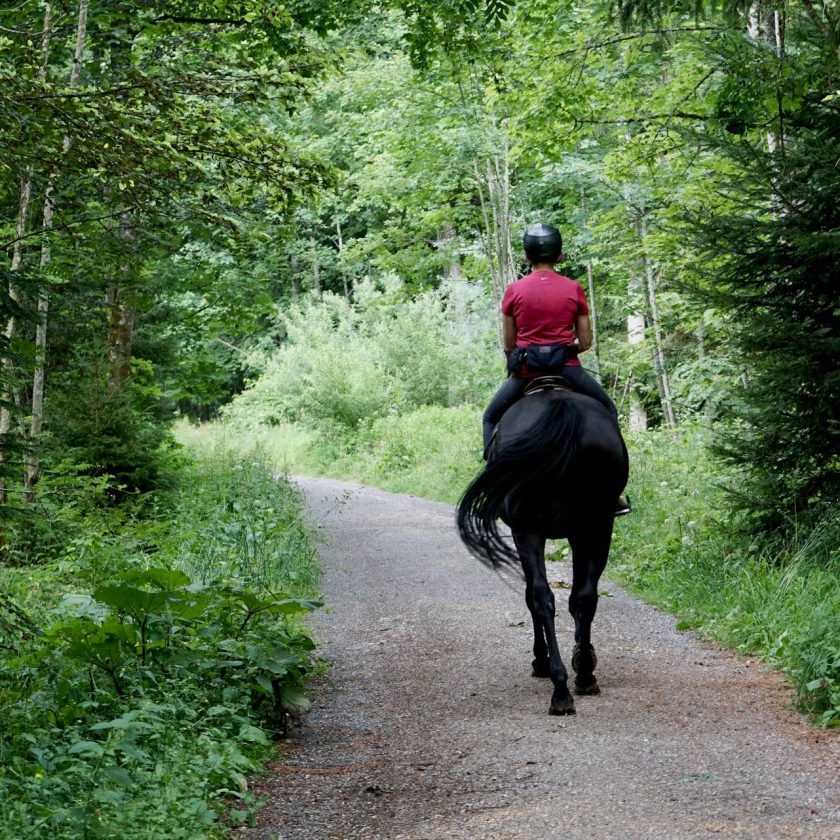Winter Horse Care Tips from Equine Veterinarian Juliette Edmonds
Horse Care :: Everything Horse Magazine :: PetPlan Equine
Petplan Equine Ambassador and Veterinary Surgeon Juliette Edmonds balances a busy work schedule with caring for and riding her three horses; Guess Again (Jess), Bubba Gump (Boodles) and newest edition, 18-month-old Bazaars Que Sera (Pandora). Like many of us, Juliette has her own personal hacks to help her get through the long winter months. Of course, alongside these tips, it’s crucial to remember to keep a large snow scoop and other snow tools close by in order to go about your daily tasks! Here, she talks to us about issues to be mindful of this winter surrounding horse care.
Weight Management
“The main thing to remember in winter is your horse will graze for about 18 hours a day, whether they’re in work or not, so they need to have constant access to forage, either hay or haylage,” begins Juliette. “Winter is actually quite a good time for overweight horses to ‘shift’ a few extra pounds. For many of us our time in the saddle and hours of turnout is reduced, therefore our horses aren’t quite as active as they are in the summer. If this is the case, reducing the amount of energy-giving feed is important. It’s crucial to keep the fibre intake up but reduce the calories,” explains Juliette. Over winter I do see a lot of horses with behavioural issues, as the amount of concentrates and therefore energy they receive remains the same.”
Condition scoring you horse
“If you have access to scales this is useful to monitor your horse’s weight periodically, not just over winter but throughout the year. Just bear in mind that muscle is heavier than fat,” says Juliette.
“I would advise condition scoring your friend’s horse and vice versa, as you may be less biased than you would be with your own,” laughs Juliette. “I would start by looking at the size of the crest and feeling whether it is soft or hard. If it is tight like a drum, the horse is most likely overweight and may be at risk of laminitis.”
“I would advise condition scoring your friend’s horse and vice versa, as you may be less biased than you would be with your own”
“The next area to look at is the ribs. While at rest, you shouldn’t be able to see the ribs by just looking at the horse, but you should be able to feel individual ribs when you place your hand on their side and apply a little pressure. If you have to go searching for them, the horse is carrying too much weight. Every horse is different,” continues Juliette. “However, if the horse is overweight, fat pads will appear, most likely behind the shoulder or the saddle.”
Head to the Petplan Equine website to find out more about condition scoring and weight management.
Winter dehydration
“Although it may seem simple, always remember to allow your horse constant access to water. If they are living out check their water source every day and during the colder weather, make sure it isn’t frozen over. If your horse doesn’t have access to water, they are far more likely to develop an impaction colic,” adds Juliette.
“Again, having access to forage is a good way to encourage your horse to drink. Appetite correlates to drinking if your horse has no food he usually won’t drink. Wetting hay or spraying haylage can also ensure that your horse takes in fluid.
“Adding apples or apple juice can also encourage your horse to drink and while every horse is different, some prefer drinking tepid water.”
To find out more about how to prevent winter dehydration, head here.
Hoof management
“With the wetter weather that accompanies the winter months, the fields always become boggy and you almost feel like your horse is going to develop foot rot,” remarks Juliette. “Unfortunately, this isn’t too far from reality,” she continues. “In the wet conditions your horse’s frogs can deteriorate, the heels can soften and thrush, a bacterial infection which affects the frog, is all too common.
“In the case of bacterial infections, prevention is the best cure. If your horse is living out over winter, try and bring them in for a few hours each day so they stand on hard ground, allowing the air to circulate around the hoof and dry it out. If your horse is in a stable for a long period of time, make sure they have time off wet bedding. It is important that you pick your horse’s feet out two or three times a day.

“Wet and muddy legs can also prove problematic. I have found the best thing to do is to try and not hose the legs off unless necessary, but instead dry them if you can. I bandage my horses legs and wrap them when they come in from the field and leave them on overnight. Then, if need be, I just brush the dry mud off,” adds Juliette.
“If you think your horse may have a bacterial infection or you are aware of an unpleasant odour around your horse’s hooves, I would advise contacting your vet to discuss the best course of action.”
Teeth and general MOT
“You should monitor your horse’s teeth all year round. I often check my horses’ teeth two or three times a year. However, as winter is considered the end of the competition season for many, it is a good idea to have a dental check-up once the busy spell is over as there may have been changes in your horse’s mouth throughout the summer. I would then suggest having their teeth checked before the season picks up the following year,” comments Juliette.
“It is a good idea to give your horse a full MOT as you head into winter and arrange a health check with your vet. Asking your physio to treat your horse is useful also. This allows you time over winter to deal with any niggles or problems that may be flagged and if your horse needs rehabilitation for an injury or illness then you know they have the winter to recover before hopefully heading out and enjoying the summer months.”

My top tip
“I would consider investing in a set of drying wraps, they are really useful, especially if your horses are out during the day in quite a wet or muddy field. I used to have a few problems with Boodles legs but since I have adopted the process of drying his legs before settling him in for the night and brushing the dry mud off, he has been a lot more comfortable and we haven’t had an issue.”






